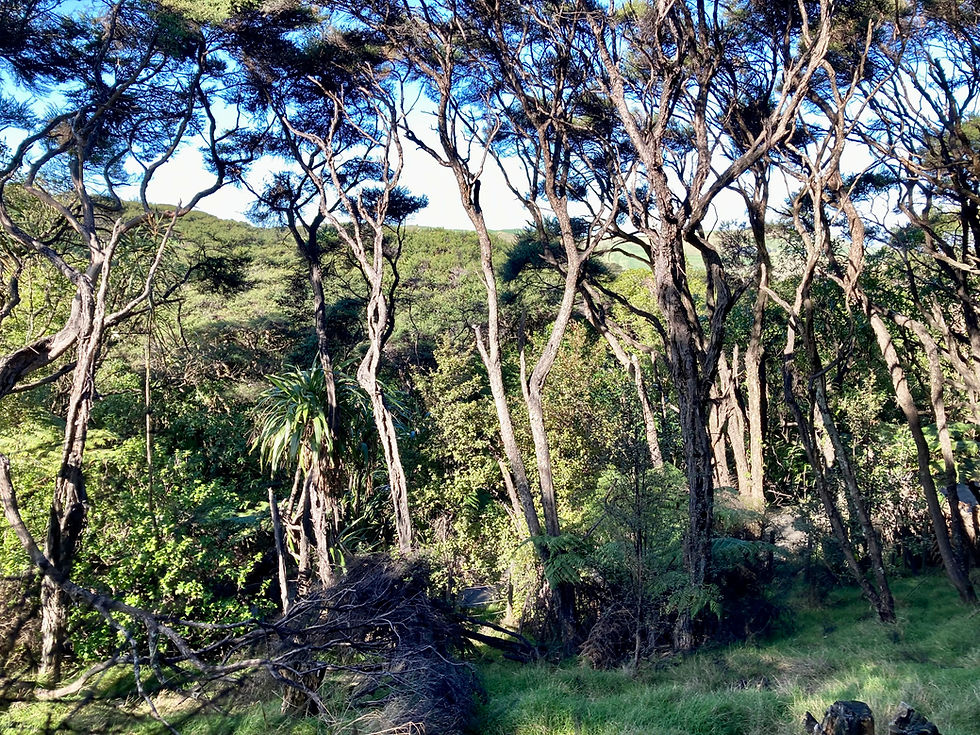The joker of the pack - Clematis afoliata
- Heda Landscape Design Ltd.

- Jul 6
- 2 min read

Out of the nine New Zealand indigenous Clematis species , this one is probably the most unusual.
As its name suggests, Clematis afoliata is distinguished by its lack of leaves, or more accurately, its leaves are severely reduced to petioles. Instead, photosynthesis is performed by its wiry green stems. This is the result of the plant adapting to its often harsh natural habitat of open ecologies; it occurs naturally in the rocky scrubland and grassland on the dry eastern flanks of the lower North Island and South Island.
The growth habit usually appears as a tangled mass bound together by spiralling tendrils. In a garden situation where it can be grown over a support, typically a size of about 2x2m can be reached.
To climb, Clematis employs a technique called haptotropism. This is a fascinating physiological function where a plant's directional growth responds to touch or contact with a solid object. When a tendril comes into contact with a support, it begins to coil or twine around it. Hormones such as auxin are released, which promotes cell elongation on the side of the tendril opposite the contact point, causing it to bend.

During the springtime (October - November), this slender, scrambling vine is smothered in creamy, fragrant flowers and is a sight to behold!
This is followed by fruits in early summer and equally interesting seed heads with an ethereal quality to them.

Although it is slow-growing, this pioneer species is used in early stages of ecological restoration projects. Its environmental services extend to providing habitat and shelter to other species of smaller insects and birds in its preferred open and exposed sites.
Leafless Clematis will provide plenty of intrigue for your garden visitors unaccustomed to our more bizarre native plant forms, and is well worth introducing into a coastal garden, if only as a conversation starter.
Source: THE COASTAL GARDEN|DESIGN INSPIRATION FROM WILD NEW ZEALAND (GABITES,I. 2015, POTTON&BURTON)
iNaturalist, Wikipedia



